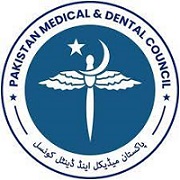ISOLATION AND CHARACTERIZATION OF URINARY PATHOGENS FROM CATHETERIZED PATIENTS IN A TERTIARY CARE HOSPITAL
Abstract
Urinary tract infection (UTI) is the most common nosocomial infection. Indwelling catheters are found to be strongly associated with UTIs. In present study a total of 110 catheterized patients from general wards and ICU of Mayo Hospital Lahore were investigated for their microbial evaluation. Out of 110 urine samples 80 cultured positive of which 25 developed UTI symptoms while 55 were not having UTI symptoms implying 23% acquired catheter associated urinary tract infection (CAUTI) while 50% developed asymptomatic bacterial colonization. Among the isolates 49% Escherichia coli, 14% Psuedomonas aeruginosa, 7% Staphylococcus aureus, 7% Klebsiella pneumoniae, 10% Proteus species, 5% Enterobacter aerogens and 8% fungi and yeast were recovered. Out of 80 patients who were cultured positive 52 were females revealing high susceptibility of females towards acquiring UTI. 74% of patients were married showing higher rate in married. Prevalence of CAUTI was low in this hospital while asymptomatic colonization was 50%, duration of catheterization had strong influence on occurrence of infection as 36% with UTI were catheterized from 3 weeks and only 6% for 1-3 days. Socioeconomic status was not found to have major influence. Patients who needed to be catheterized for longer duration should be checked regularly for UTI symptoms to prevent complications that are life threatening and are difficult to treat.






